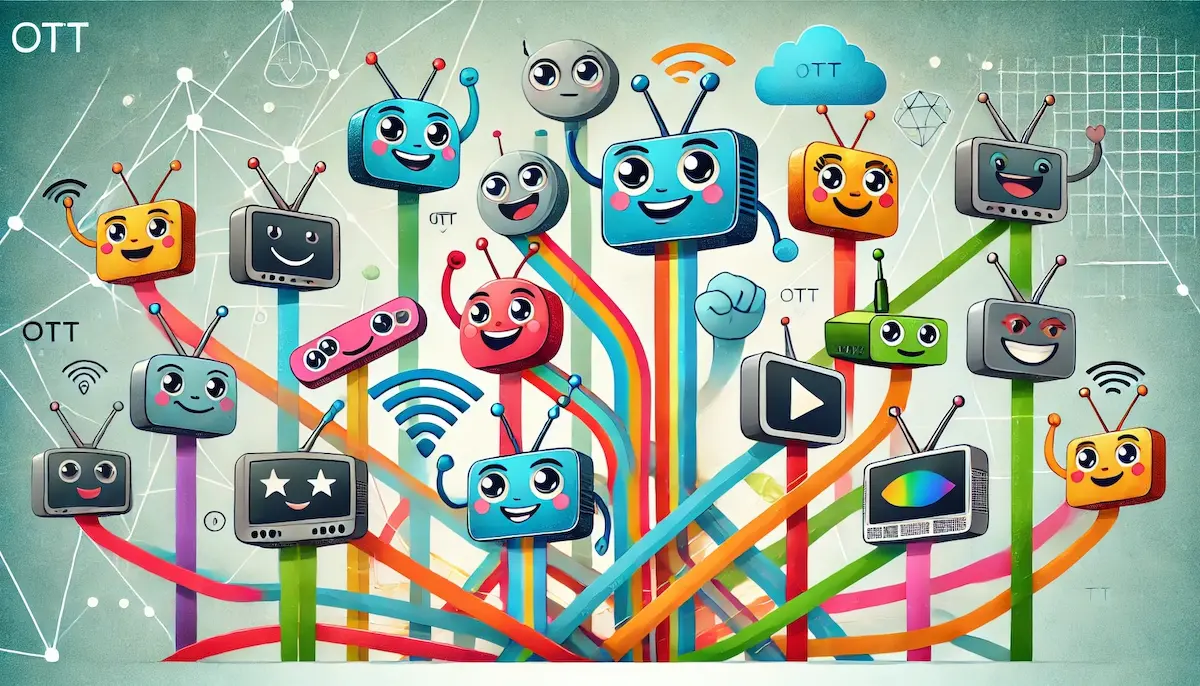The over-the-top (OTT) ecosystem represents a dynamic and ever-evolving network of services, technologies, and players that deliver digital content directly to users over the internet. This ecosystem has transformed how we consume entertainment, news, and even educational content. Let’s dive into the components of the OTT ecosystem, how they interact, and their impact on the media landscape.
Components of the OTT Ecosystem
The OTT ecosystem comprises various elements that work together to deliver seamless streaming experiences. These components include:
Content Creators and Providers
Content creators and providers are at the heart of the OTT ecosystem. They produce the movies, TV shows, documentaries, sports events, and other media content that users want to watch. This group includes:
- Studios and Production Companies: Create original content for OTT platforms.
- Broadcasters and Networks: Offer their existing content libraries and live TV services through OTT channels.
- Independent Creators: Produce content directly for platforms like YouTube and Vimeo.
OTT Platforms
OTT platforms are the services that host and distribute content. They provide the interface and infrastructure for users to access media. Key OTT platforms include:
- Subscription-Based Services: Netflix, Hulu, Amazon Prime Video, Disney+.
- Ad-Supported Services: YouTube, Peacock, Tubi.
- Transactional Services: iTunes, Google Play Movies, where users pay per view or download.
- Live Streaming Services: Twitch, YouTube Live, which focus on real-time broadcasts.
Content Delivery Networks (CDNs)
CDNs play a crucial role in the OTT ecosystem by ensuring that content is delivered efficiently and reliably. CDNs are networks of servers located around the world that cache and deliver content from the nearest server to the user, reducing latency and buffering.
User Devices
The devices used to access OTT content are diverse, reflecting the flexibility and convenience of streaming. These include:
- Smart TVs: Integrated with apps for direct streaming.
- Streaming Devices: Roku, Amazon Fire Stick, Apple TV, which connect to regular TVs.
- Mobile Devices: Smartphones and tablets with dedicated apps.
- Computers: Desktops and laptops accessing content via browsers or apps.
- Game Consoles: PlayStation, Xbox, which offer streaming capabilities.
Internet Service Providers (ISPs)
ISPs provide the necessary internet connectivity that enables streaming. The quality of the streaming experience depends heavily on the speed and reliability of the internet connection provided by ISPs.
Interactions Within the OTT Ecosystem
The components of the OTT ecosystem interact in a complex web to deliver content to end-users:
- Content Acquisition and Licensing: OTT platforms acquire rights to stream content from studios, networks, and independent creators. This process involves negotiations and agreements on content licensing.
- Content Hosting and Management: Once acquired, content is hosted on servers and managed through platforms’ content management systems. Metadata, such as titles, descriptions, and thumbnails, is added for easier navigation.
- Content Delivery: CDNs ensure that when a user selects a piece of content, it is delivered from the closest server, optimizing speed and reducing buffering.
- User Interaction: Users interact with OTT platforms through various devices, selecting and consuming content as per their preferences. Platforms track user behavior to recommend content and personalize the viewing experience.
Impact of the OTT Ecosystem
The rise of the OTT ecosystem has significantly impacted the media and entertainment industry:
- Increased Competition: Traditional cable and satellite TV providers face stiff competition from OTT services, leading to cord-cutting trends.
- Content Diversity: OTT platforms offer a vast array of content, catering to niche audiences and promoting diversity.
- Global Reach: OTT services can reach a global audience, breaking down geographical barriers.
- Personalized Viewing: Advanced algorithms provide personalized content recommendations, enhancing user satisfaction.
Future Trends in the OTT Ecosystem
The OTT ecosystem is poised for continued growth and innovation:
- 5G Technology: Faster internet speeds with 5G will improve streaming quality and enable new experiences like augmented reality (AR) and virtual reality (VR).
- Original Content: Investment in original content will continue to rise, with platforms vying to attract and retain subscribers.
- Interactive Content: Interactive shows and real-time viewer engagement will become more prevalent, offering new ways to experience media.
Blockfine thanks you for reading and hopes you found this article helpful.
